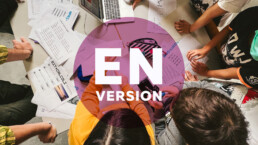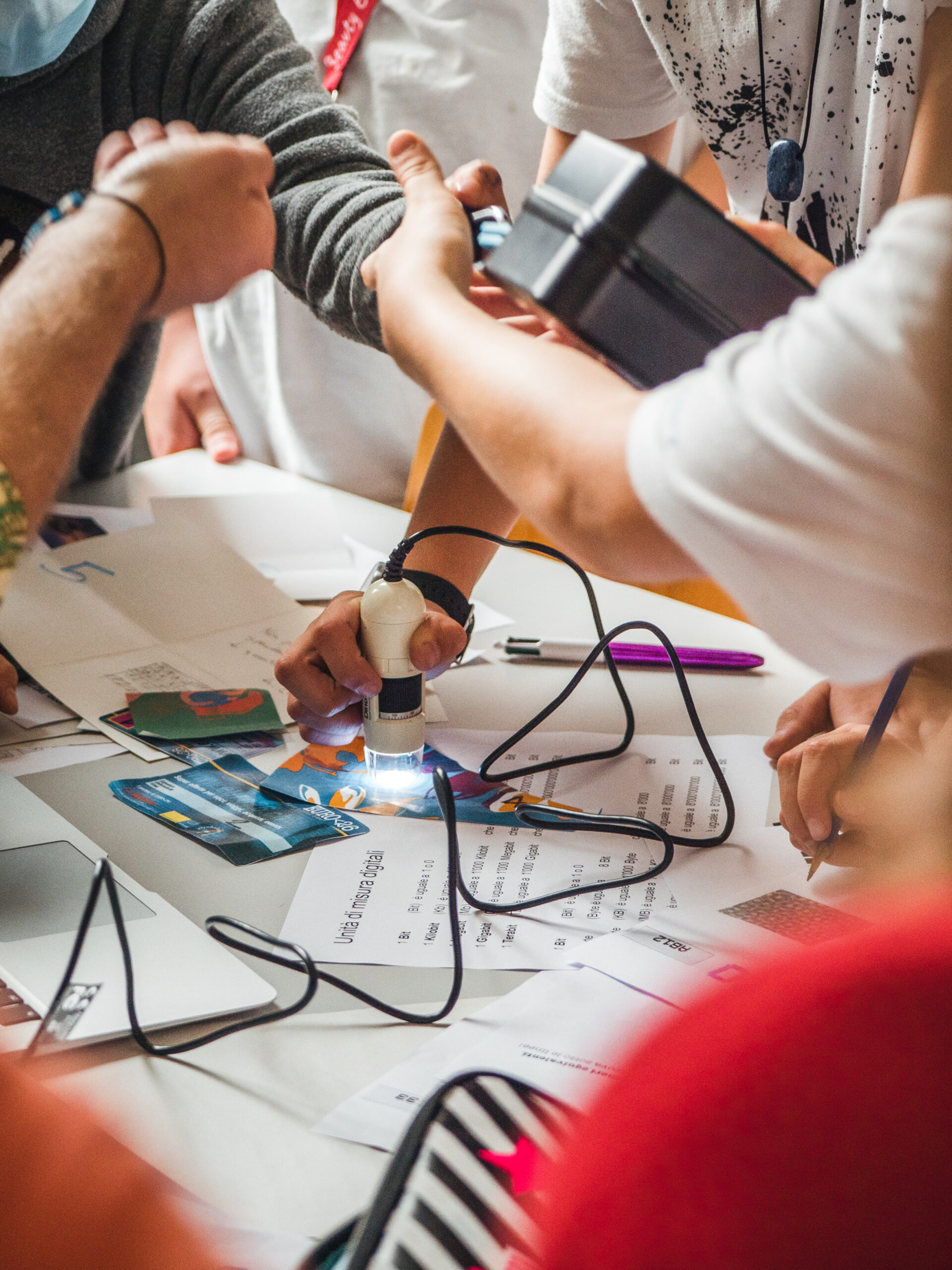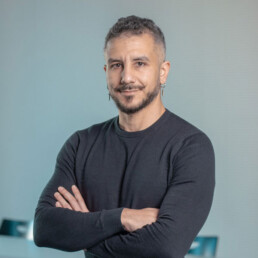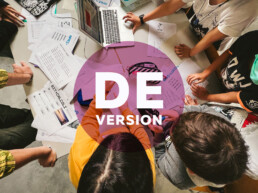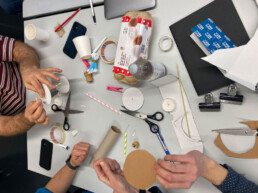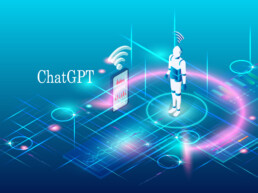Computer Science education in Ticino
Although computer science is not explicitly mentioned in the curriculum, numerous competences and concepts that are central to computer science can be found at all school levels. As part of the cross-curricular competence area “Technology and Media”, the curriculum mentions competences such as “creating digital artefacts”, “recognising the elements and characteristics of an instruction or command to perform a specific action” or “organising, designing and applying instructions in the digital world to solve a problem”. Many of the skills mentioned can be categorised as “computational thinking”.
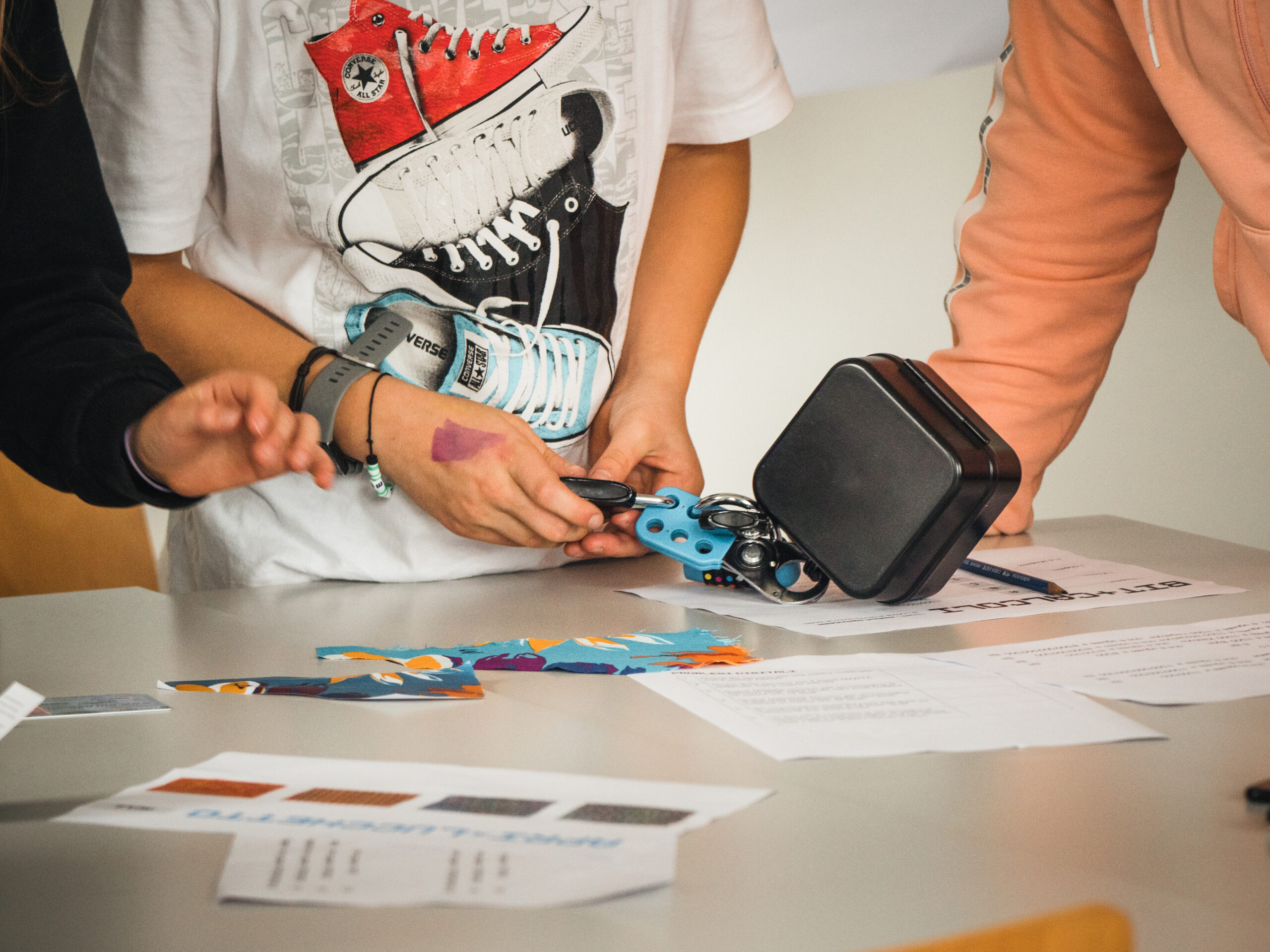
Computer Science education with in-training teachers
At the Department of Education and Learning at the University of Teacher Education (SUPSI-DFA/ASP), future teachers learn to use digital tools to create digital artefacts as part of their bachelor’s degree and in-service training. Teachers in kindergartens and primary schools study aspects of computer science, computational thinking, programming with Scratch and Scratch Jr, and educational robotics. The continuing education programme offers an advanced certificate in educational robotics, where computer science is explored through the programming of educational robots such as Thymio or Lego Mindstorm EV3.
In these courses, students have the opportunity to learn about programming through a series of fun or game-based learning activities.
Gamification and Game-based learning in class
In the undergraduate programme, we introduce computer science unplugged through the Computer Science Beaver competition. Programming with Scratch is first learned through a series of tutorials, after which students develop their own small video games. The advantages of this approach to introducing programming are as follows: On the one hand, the playful aspect motivates students to develop their own games. On the other hand, this approach shows that the development of video games – a very motivating topic for primary school students in the first and second years – is an art that can combine different formats. Students get an insight into activities that have already been successfully implemented in some primary schools in the canton in recent years: Teachers have worked with their classes to develop video games or interactive stories in which students combine their own artwork from art class with recordings of their own voices or instruments from music class. These activities motivate pupils to learn programming. At the same time, they learn how much interdisciplinary knowledge from different STEAM[1] subjects is needed to create a complete digital artefact.
In robotics courses at both undergraduate and postgraduate level, students are introduced to Thymio programming through an escape room. Their task is to correctly programme three Thymio robots to complete a specific task within a given time. This fun learning activity combines escape room puzzles with computer science skills through an engaging narrative: to save the world, students must learn the basics of programming with VPL, one of the Thymio programming languages. After the game, there is a debriefing session in which students conceptualise the learning that has taken place during the game.
[1] STEAM: Science, Technology, Engineering, Art and Mathematics
Gamification and Game-based learning outside of the classroom
Other examples of computer science and robotics escape rooms were presented at the Festival della Scienza 2022 in Genoa, Italy, and Sportech 2023 in Tenero, Switzerland. During these science fairs, school classes were able to register and play an escape room. The task was to choose a programming language (either Scratch or VPL) and program a Thymio to follow the fastest path. The data collected during the event was included in a publication presented at the International Conference on Interaction between Children and Robots 2023 in Milan. The publication “Which programming language should be chosen to address children from kindergarten to 12th grade and stimulate their interest in programming” discussed which language should be preferred for programming Thymio. Both escape games are available for free at www.roteco.ch.
Another interesting example is the “Computational Thinking” escape room organised by the Swiss TecLadies in Ticino. The escape room focused on the lives of two female researchers and the reasons that led to their STEAM careers.
Outlook
Our qualitative observations during gamified and game-based learning activities, both at university level and at the aforementioned school levels, clearly show that both target groups can be well motivated by this content. In Ticino, we therefore want to continue the momentum created by these activities. We will deepen computer science as a subject and reach out to high schools where computer science has been officially introduced as a subject from the 2022/2023 school year.
Das könnte Sie auch interessieren
Informatik, spielerisches Lernen und Gamification: eine “Tessiner” Perspektive
Der aktuelle Tessiner Lehrplan ("Piano di studio della scuola dell'obbligio") ordnet die Informatik in der Volksschule dem fächerübergreifenden Kompetenzbereich Bereichen "Technologie und Medien" zu.…
Die Zukunft gestalten: Warum Maker Education in der Informatik unverzichtbar ist
In unserer digitalisierten Welt wird es zunehmend wichtiger, junge Menschen nicht nur als passive Konsument:innen digitaler Medien zu erziehen, sondern ihnen die Fähigkeiten und Werkzeuge zu geben,…
Die Umsetzung der Weiterentwicklung der gymnasialen Maturität: eine Herausforderung für Gymnasien
Nachdem die neue Maturitäts-Anerkennungsverordnung MAV bzw. das neue Matura-Anerkennungs-Reglement MAR bereits im letzten Juni vom Bundesrat bzw. der Konferenz der kantonalen Erziehungsdirektorinnen…
ChatGPT à l’école : Ange ou démon ?
En collaboration avec des scientifiques et des experts dans le domaine de l'éducation numérique, le professeur Francesco Mondada a mené une enquête auprès d'enseignants de lycées publics et privés.…
